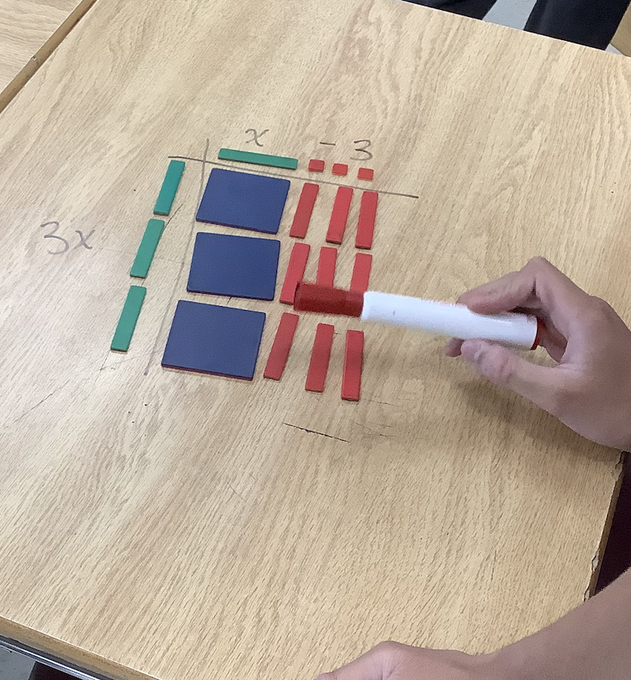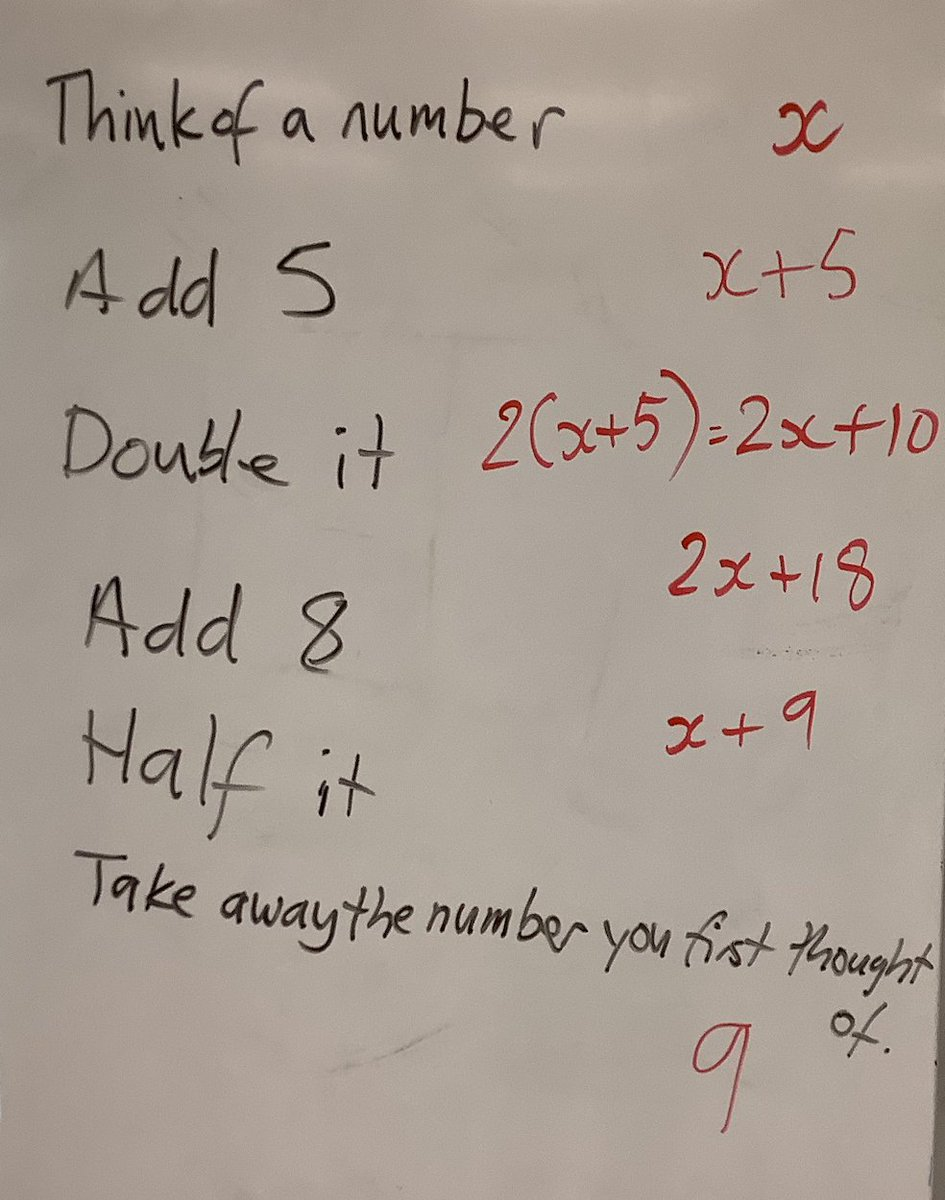I tried this activity in Heather Lyon's MTH1W class using Polypad on Mathigon to help illustrate algebraic expressions. First Q: if this is x + 2 what would 3(x+2) look like? Students go to the VNPS to work in small groups:
Some puzzled looks at first but once they began sketching what it might look like, the students saw what was happening:
I could then easily use Polypad to confirm this:
I followed this up with 5(x+4) and we could now talk of more efficient ways of drawing our thinking. All the while I'm nudging them to the array model:



Now, I want to chunk the ones so give this question. Students' array models are now becoming more efficient:
We do this for a few more example. As they are feeling confident, I want to push them so ask them to sketch out what x(2x+3) would look like. Though they have never seen this sort of question before, they connect it to the model that they have just been using:
I can quickly confirm this on Polypad:
Some students choose to use the concrete algebra tiles but I can then show them how this connects to the diagrammatic model. One of these students says 'Now I see it... and that will save time!'
A few more examples follow and while I help a couple of groups, I give an extension to others: the answer is 18x^2-27 x... what is the question? They factor this successfully without any help from me:
They have been working hard so we take a little break and I perform a little mathmagic: think of a number... add 5, double it... add 8... half it... take away the number you first thought of. By using a little chicanery with a pack of cars, I show them the nine of hearts... the number they were all left with!! I then show how I used algebra to 'rig the system'!
With a little bit of time left, we decide to see if they can use this new knowledge to solve equations. I scroll to the top of my polypad to create an equation from the first two expressions we created:
And with no fuss whatsoever, they successfully solve it!
I was thinking how this approach differed to the one I would have used when I began teaching. Then, I would have given ten examples, no visuals, all symbolic and got the students to do more exercises. Now the students (thanks to Mathigon!) are doing the math!
The link to the polypad I used is here.

































